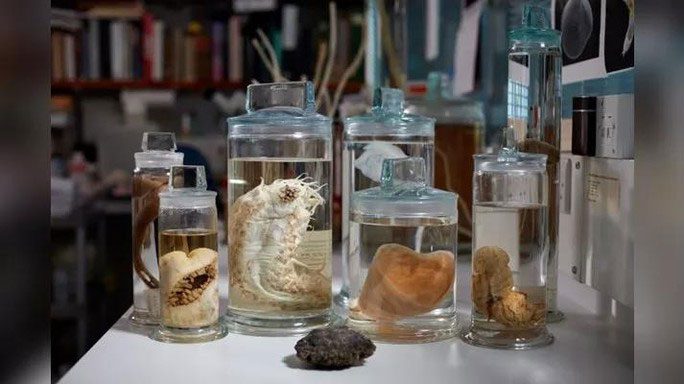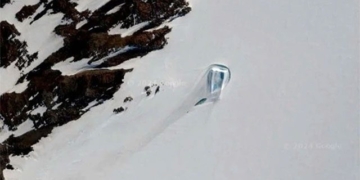Scientists have unveiled a stunning “treasure trove” from the Clarion-Clipperton Zone expedition, a colossal “scar” on the ocean floor of the Pacific Ocean.
The Clarion-Clipperton Zone (CCZ) is a major fracture zone stretching from Mexico to Hawaii over an area of 6 million km2. It can be understood as a large scar where the ocean floor has cracked and deformed due to tectonic plate movements.
According to Live Science, at depths of 4-6 km beneath the water’s surface, the CCZ is covered by unusual spherical nodules the size of potatoes, rich in metals and rare earth elements that mining companies are eager to exploit.

Some bizarre specimens from CCZ – Pacific Ocean – (Photo: NATURAL HISTORY MUSEUM, LONDON).
However, new research shows that it is also a pristine marine area teeming with many strange creatures, whose existence could be threatened by human intrusion before they are even fully understood by humanity.
The expedition utilized advanced technology to reveal up to 5,580 animal species found in the CCZ.
Shockingly, of these, only 438 species have been named. More than 5,000 species remain completely unknown to the world, according to a study recently published in the journal Current Biology, led by deep-sea ecologist Muriel Rabone from the Natural History Museum in London.
The research team estimates that there could be as many as 6,000-8,000 species lurking in the CCZ, with 88% to 92% being new species.
The biodiversity in the CCZ is also extremely high. The species discovered belong to 27 different animal phyla, divided into 49 classes, 163 orders, 501 families, and 1,119 genera, with the most abundant being the phylum Arthropoda (27%).
These include various species and relatives of creatures such as sea spiders, oysters, worms, jellyfish, corals, sponges, sea cucumbers… The “immortal monster” tardigrade (water bear) – a creature believed to be invading the Moon after being ejected from an Israeli spacecraft – is also present.
The entire CCZ currently does not fall under the jurisdiction of any nation and is managed by the International Seabed Authority (ISA) of the United Nations.


















































